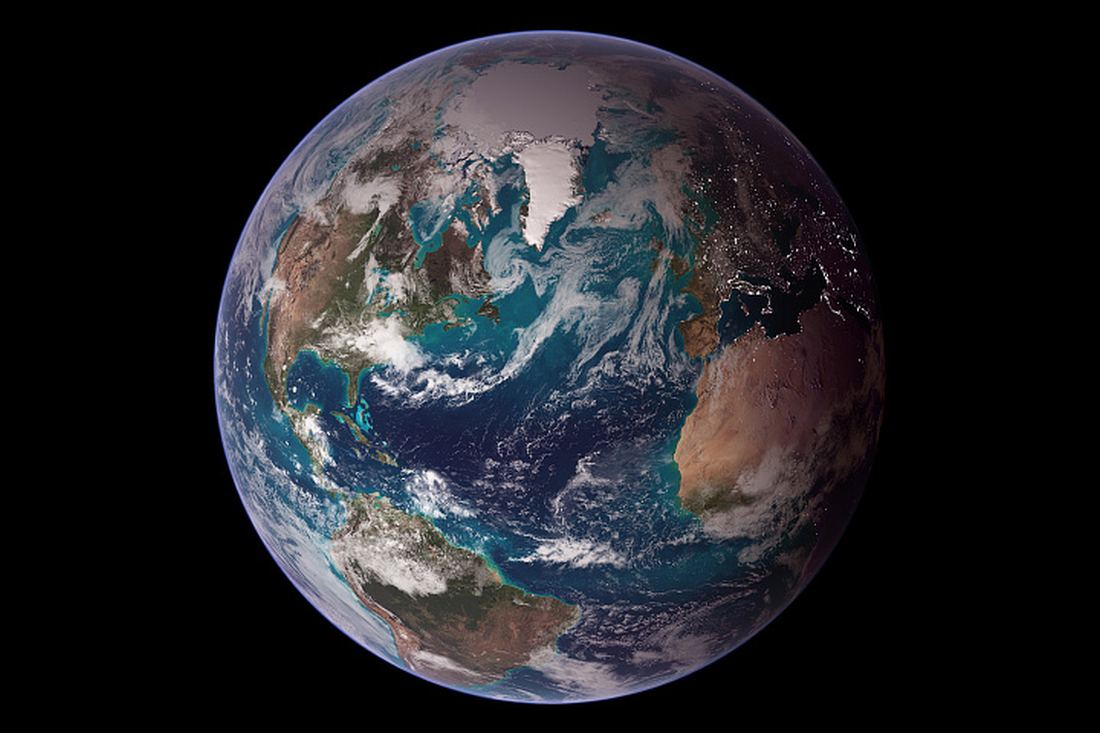We are all familiar with the atmosphere of the Earth and part of this, the ionosphere, is a layer of weakly ionized plasma. It extends from 50 to 1,500 km above the planet. It’s a diffuse layer but sufficient to interfere with satellite communications and navigation systems too. A team of researchers have come up with an intriguing idea to utilise millions of mobile phones to help map the ionosphere by relying on their GPS antennas.
Continue reading “Millions of Phones Could Map the Earth’s Ionosphere”An Otherworldly Cloud Over New Zealand

Filmmakers love New Zealand. Its landscapes evoke other worlds, which explains why so much of The Lord of the Rings was filmed there. The country has everything from long, subtropical sandy beaches to active volcanoes.
The country’s otherworldliness extends into its atmosphere, where a cloud nicknamed the “Taieri Pet” forms when conditions are right.
Continue reading “An Otherworldly Cloud Over New Zealand”Experimental Radar Technique Reveals the Composition of Titan’s Seas

The Cassini-Huygens mission to Saturn generated so much data that giving it a definitive value is impossible. It’s sufficient to say that the amount is vast and that multiple scientific instruments generated it. One of those instruments was a radar designed to see through Titan’s thick atmosphere and catch a scientific glimpse of the moon’s extraordinary surface.
Scientists are still making new discoveries with all this data.
Continue reading “Experimental Radar Technique Reveals the Composition of Titan’s Seas”What Deadly Venus Can Tell Us About Life on Other Worlds

Even though Venus and Earth are so-called sister planets, they’re as different as heaven and hell. Earth is a natural paradise where life has persevered under its azure skies despite multiple mass extinctions. On the other hand, Venus is a blistering planet with clouds of sulphuric acid and atmospheric pressure strong enough to squash a human being.
But the sister thing won’t go away because both worlds are about the same mass and radius and are rocky planets next to one another in the inner Solar System. Why are they so different? What do the differences tell us about our search for life?
Continue reading “What Deadly Venus Can Tell Us About Life on Other Worlds”What Can Early Earth Teach Us About the Search for Life?

Earth is the only life-supporting planet we know of, so it’s tempting to use it as a standard in the search for life elsewhere. But the modern Earth can’t serve as a basis for evaluating exoplanets and their potential to support life. Earth’s atmosphere has changed radically over its 4.5 billion years.
A better way is to determine what biomarkers were present in Earth’s atmosphere at different stages in its evolution and judge other planets on that basis.
Continue reading “What Can Early Earth Teach Us About the Search for Life?”Life Might Be Difficult to Find on a Single Planet But Obvious Across Many Worlds

If we could detect a clear, unambiguous biosignature on just one of the thousands of exoplanets we know of, it would be a huge, game-changing moment for humanity. But it’s extremely difficult. We simply aren’t in a place where we can be certain that what we’re detecting means what we think or even hope it does.
But what if we looked at many potential worlds at once?
Continue reading “Life Might Be Difficult to Find on a Single Planet But Obvious Across Many Worlds”The LIFE Telescope Passed its First Test: It Detected Biosignatures on Earth.

We know that there are thousands of exoplanets out there, with many millions more waiting to be discovered. But the vast majority of exoplanets are simply uninhabitable. For the few that may be habitable, we can only determine if they are by examining their atmospheres. LIFE, the Large Interferometer for Exoplanets, can help.
Continue reading “The LIFE Telescope Passed its First Test: It Detected Biosignatures on Earth.”The Atmosphere of an Exoplanet Reveals Secrets About Its Surface
As astronomers have begun to gather data on the atmospheres of planets, we’re learning about their compositions and evolution. Thick atmospheres are the easiest to study, but these same thick atmospheres can hide the surface of a planet from view. A Venus-like world, for example, has such a thick atmosphere making it impossible to see the planet’s terrain. It seems the more likely we are to understand a planet’s atmosphere, the less likely we are to understand its surface. But that could change thanks to a new study in the Monthly Notices of the Royal Astrophysical Society.
Continue reading “The Atmosphere of an Exoplanet Reveals Secrets About Its Surface”How Do Lava Worlds Become Earth-Like, Living Planets?

Earth was once entirely molten. Planetary scientists call this phase in a planet’s evolution a magma ocean, and Earth may have had more than one magma ocean phase. Earth cooled and, over 4.5 billion years, became the vibrant, life-supporting world it is today.
Can the same thing happen to exo-lava worlds? Can studying them shed light on Earth’s transition?
Continue reading “How Do Lava Worlds Become Earth-Like, Living Planets?”Engineers Want to Make Methanol by Pulling Carbon Right Out of the Air

Methanol is one of our most extensively used raw materials. It’s used as a solvent, a pesticide, and in combination with other chemicals in the manufacture of plastic, clothing, plywood, and in pharmaceuticals and agrochemicals.
It’s also used as a fuel.
Continue reading “Engineers Want to Make Methanol by Pulling Carbon Right Out of the Air”

